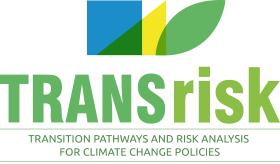Deploying popular renewable energy technologies at scale requires significant amounts of land compared with most fossil fuels. Solar is deployed on rooftops, but increasingly also on agricultural land. Land-use change emissions could be very large if renewable electricity targets are completely met by solar or bioenergy but contains significant regional variability. This study underlines the importance of including land-use impacts in policy assessment, particularly that encourages the large-scale use of solar and bio-energy.
Deploying several popular renewable energy technologies at scale would require significant amounts of land. This contrasts with most fossil fuels, which are ‘energy dense’ and require relatively small amounts of land for infrastructure such as mines, wells and refining plant.
The land use issue most commonly comes up in the debate around biofuels, with ‘food vs fuel’ a major topic of contention. However, other technologies such as solar power can also take up large amounts of land. Solar can, and often is, deployed on rooftops, however the relative simplicity of installing large solar farms on the ground means that, with higher penetration of solar energy, it will increasingly be deployed on agricultural land.
Impacts of land use change
There are two main land use considerations for renewable deployment. The first is the impact on carbon emissions. Deploying renewable generation on land that currently acts as a carbon ‘sink’ may degrade its ability to absorb carbon. This can affect the overall emission reduction achieved by replacing fossil fuels with low carbon generation, sometimes substantially
The second is self-sufficiency in food and energy. A country’s self-sufficiency in food may fall if significant areas of agricultural land are converted to energy generation, but conversely its energy self-sufficiency may improve.
Our study

Our study explored land use changes by modelling three geographic areas: the EU- 27, India, and Japan with South-Korea. A number of scenarios were modeled for each area, all using projections to 2050. The Global Change Assessment Model (GCAM) was used for the study.
To consistently model land impacts for solar energy, we developed a special solar module for GCAM. We might assume that solar energy will be deployed on rooftops and unused land, for example wastelands where these are available. However, in practice rooftop installations tend to be expensive, whilst wastelands can be some distance from human habitations and water resources, and therefore have higher transmission and cooling costs.
Land prices also have an impact on solar deployment. If agricultural land is cheap then we can expected more solar developments to take place there. However, if agricultural land is expensive it does not automatically follow that solar will be displaced to wastelands, as there will be economic pressure to convert land to agriculture in order to take advantage of the higher prices.
Results
Our results suggest that if (current) renewable electricity targets are completely met by solar or bio-energy, land use change emissions could be very large: between 9% (solar) or 40% (bio-energy) of the equivalent emissions of gas-fired electricity generation.
Japanese Farmer
These headline figures contain significant regional variability. The land use emissions impact of solar energy in India, for example, is only around 40% of the impact in the EU, whilst the impact of bio-energy is about 30% higher in the EU than in India, Japan and South-Korea.
A more realistic, and economically optimal, renewable electricity pathway in the EU would lead to land use emissions per unit of electricity equivalent to 2.6% of the emissions of gas-fired generation, or up to 8.9% if the share of wind energy in is limited to 50% of the total renewable electricity mix (for energy security reasons). In India, a similar ‘realistic’ pathway would lead to land use emission equivalent to 3.0% of the emissions from gas-fired generation, while a policy limiting solar energy to wastelands reduces this impact to 1.3%. In Japan and South Korea, the impact of the realistic pathway is 7.6% of the emissions from gas-fired electricity, however if a policy of phasing-out nuclear energy if included this increases the impact to 10.3%.
Agricultural self-sufficiency falls only slightly if renewable electricity targets are met entirely by solar energy: by 1% in India to 5% in Japan and South-Korea. This, however, is more than offset by an increase in energy self-sufficiency of between 15% in the case of India, Japan and South-Korea, to around 24% in the EU. This occurs due to the replacement of imported fossil energy by domestically produced solar energy.
In the case of bio-energy, the there is a far larger fall in agricultural self-sufficiency – as much as 17% in the EU. None of the regions studied saw this impact offset by an increase in energy security, as at this scale much of the bio-energy is has to be imported from abroad.
Policy Implications

Our study underlines the importance of including land use impacts in policy assessment, particularly for policies that encourage the large scale use of solar and bio-energy. If they are not fully considered then projected carbon emissions reductions may be inaccurate, and agricultural self-sufficiency adversely impacted.
The concept of ‘agrivoltaic systems’ is also worthy of further investigation. Here photo-voltaic panels are installed on agricultural land in such a way that food cultivation can also take place, for example by using shade resistant crops. One study suggested that generation capacity of 40-70GW could be installed if lettuce cultivation alone in the USA was converted to agrivoltaic systems.
Notes
This article is an output of the EU-funded TRANSrisk project. It is derived from work undertaken for Deliverable 4.4 “Synergies and Conflicts of Different Transition Pathways”, specifically the paper “Land-use impacts from renewable energy policies”. This paper, which is fully referenced, and other TRANSrisk outputs can be downloaded from the project website.
Photo Credits
2010_09_01_sea-bos_100 by Doc Searls, licenced under CC BY 2.0
Solar Farm, Brockville Ontario by Jonathan Potts licenced under 2014CC BY-NC-ND 2.0
Japanese farmer by Héctor de Pereda licenced under CC BY-NC 2.0
Turkey & Solar Panels at Post Ranch by polarpanda licenced under CC BY-NC-ND 2.0
TRANSrisk
Project details
- Project title: “Transitions Pathways and Risk Analysis for Climate Change Mitigation and Adaption Strategies” (TRANSrisk)
- Funding scheme: European Union Horizon 2020 Programme (EU H2020, grant agreement no. 642260)
- Duration: 3 years (1 September 2015 – 31 August 2018)
- Project coordinator: Science Policy Research Unit, University of Sussex, United Kingdom
- Project website: www.transrisk-project.eu



